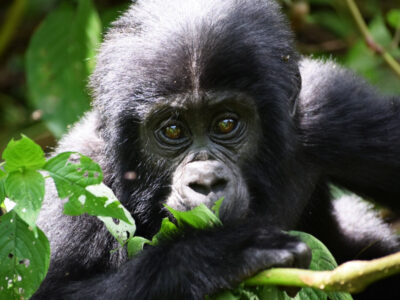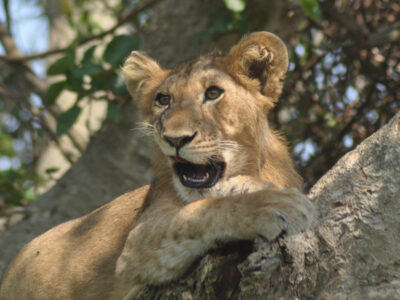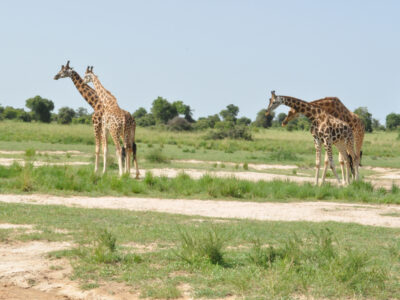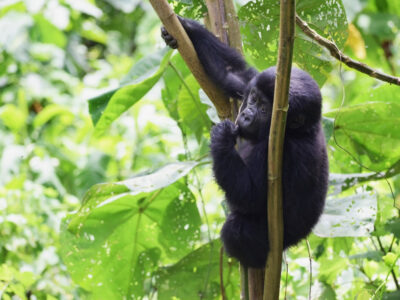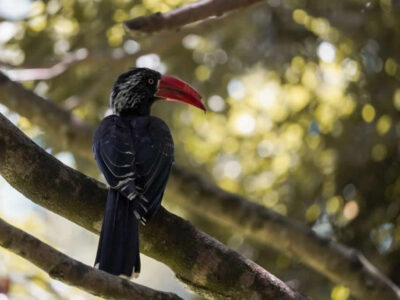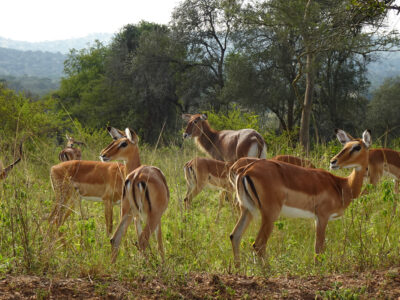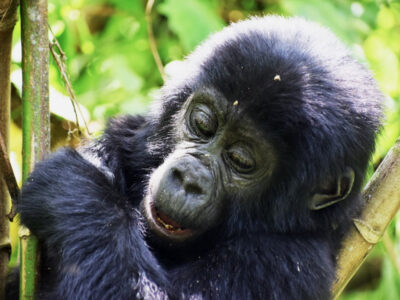When we discuss gorilla family allocations, we make an effort to explain to clients how habituated mountain gorilla families are assigned to participants in the gorilla trekking experience. Gorilla trekking is practiced in Uganda’s Bwindi Impenetrable Forest National Park and Mgahinga National Park.
Gorilla tracking involves hiking through the jungle and going long distances in search of these endangered mountain gorillas. This activity is completely dependent on interest and ability to hike, you must always be in good health to be able to successfully raise a gorilla. Journeys. You will be divided into groups or want to join other groups in case you are a solo traveler for the gorilla trip. Those traveling with family or friends can also follow the gorillas together as long as they do not exceed 8 people.
Who is in charge of distributing gorilla groups and permits? The Uganda Wildlife Authority and Rwanda Development Board, respectively, are responsible for issuing gorilla permits in those two countries. The Virunga National Park headquarters in Congo are responsible for issuing gorilla permits. The park administration assigns the gorilla groups on a field level.
What is a Gorilla permit?
The document that travelers need to track gorillas in their nests is known as a “gorilla trekking permit.” To find the gorillas, one must hike through a high, difficult, steep, and hazardous jungle. Gorillas prefer to live in the deep natural jungles, thus before participating in any thrilling or adventurous activities, hikers must be physically fit.
To trek gorillas in Bwindi Impenetrable National Park and Mgahinga National Park, you need a valid gorilla permit. Gorilla licenses were formerly distributed by the Uganda Wildlife Authority on a first-come, first-served basis, and one may choose to purchase a permit for a particular gorilla family. In other words, a person would visit Uganda Wildlife Authority and get a gorilla permit for the Rushegura Family, which is located in the Buhoma Region of Bwindi Impenetrable National Park.
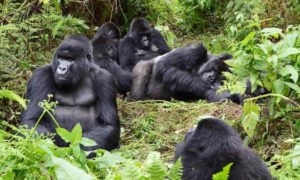
How gorilla groups are assigned? one might wonder. The availability of gorilla trekking in Uganda is determined by the interest and capacity of tourists. In Uganda, gorilla groups were allotted on a first-come, first-served basis month in advance when gorilla trekking was only beginning to gain popularity. After reading about the many gorilla families, a traveler might select one that they like. They would visit the park to determine which group they would be joining. Because certain gorilla groups were more well-known than others, it wasn’t feasible. Less people visited young gorilla families than older ones. Because of their proximity to the starting point, permits for the Rushegura group in Uganda were in high demand.
Uganda decided to divide up the gorillas into groups on the day of the trek and in the park. The names of the gorilla groups would no longer be listed on gorilla permits; only the sectors would. Then, it would be up to the park staff to divide up the groups based on the following characteristics:
Gorilla permits and sector of the park: The ability to join a group and track a specific gorilla group is granted by a gorilla permit. The day of tracking will include a request for this document. Your gorilla group in Uganda will depend on the gorilla permit you possess. In Uganda, gorilla permits are marked with the park’s sector. You can only be allocated a gorilla group in the Rushaga sector if you have permission for that area, for example.
Level of fitness: Forests and occasionally high-altitude regions are the homes of mountain gorillas. One must journey across challenging terrain made up of dense foliage, hills, and valleys to reach some of the gorilla populations. The situation is made worse by the fact that some gorilla populations reside a distance from the starting location. Therefore, gorilla groups are assigned according to the travelers’ general level of fitness. Insufficiently fit tourists will be placed with neighboring gorilla groups. The park administrators choose who gets the easier trek based solely on appearance and do not conduct a fitness test.
Therefore, if you desire a gentler hike, it’s crucial to let the park staff know about your fitness problems. You must inform the officials if you believe you are fit and deserves a difficult group. If you are a senior or disabled, Sedan chairs and a team of porters can be made available to you. More information about the Sedan chairs is available in our article on accessible gorilla trekking for the elderly and disabled.
Traveler’s Age: When assigning gorilla families to visitors, age is one of the elements taken into account. The park staff will make an effort to determine the age of visitors based on appearance or utilizing passport data. Age is not a reliable predictor of a hiker’s overall fitness. It is possible for a 60-year-old to be in better physical condition than a 23-year-old. You should let the park officials know if you are over 60 and believe your physical condition would allow you to do a harder hike. The same is true for young people who are physically inactive. Since they are less focused and mentally prepared for the exercise, younger hikers are typically assigned easy or medium treks.
The traveler’s preferences: Assigning gorilla families still take the traveler’s preferences into account. It is crucial to inform your tour operator whether you have a certain market in mind or a gorilla group in mind. The tour operator can then make the necessary plans as a result. Some tour operators have clout and can help you find the group you want. Even after everyone says the event is done, they can still obtain the permits for you.
The holiday season: Gorilla permits are extremely hard to get by during the busiest time of year. Getting your preferred gorilla group could be very challenging. To land your ideal family, you must possess exceptional luck. Your odds of tracking your favorite bands are higher during the off-season. Fewer visitors are present, and park staff is more receptive to suggestions.
The frequency of your tracking: The Park staff will be forced to place you with the gorilla family of your choice if you have previously followed that family. If you wish to witness or record a particular gorilla group, this component is crucial. You have a great probability of finding your next family by tracking more than once because you will have gotten to know the ranger. If you provided the rangers with any recommendations on your first hike, your negotiating position will be unassailable.
Note: It is crucial to select a lodging option within the area you were given if you are going gorilla tracking in Bwindi alone. You don’t want to miss the activity because your accommodation was too far from the beginning location because Bwindi is a sizable forest. Plan your vacation ahead of time. This will give your tour operator enough time to reserve the permits. It’s also crucial to remember that your experience will differ depending on which gorilla group you end up being assigned to. Due to the fact that a highly skilled team of trackers is dispatched before dawn to locate the primates’ precise location, the likelihood of seeing gorillas is extremely high.
How to handle a challenging trek and gorilla group
What if I have a tougher hike? By preparing physically and emotionally, you can still enjoy the exercise even if your trek ends up being more challenging for any reason. Walk far from your home before the event to warm up your legs. Use your neighborhood’s wooded or high-altitude areas as a practice location if you reside there. Make sure you have brought all of the essential items listed on the packing list for the gorilla walk.
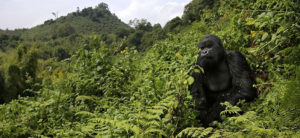
These consist of mud-resistant hiking boots, hand gloves, long sleeve shirts, hats, sunglasses, rain jackets, sweaters, and insect repellents. Additionally, make sure you have a walking stick, plenty of liquids, and energy foods to deal with hunger and thirst. Don’t forget to bring your camera, binoculars, and personal care items. You won’t have any trouble finishing the walk if you bring the aforementioned supplies.
At the trek’s beginning, you can hire porters for a modest fee to help you carry any heavy equipment. Even if you think you don’t need a porter, you should hire one. They will aid you in completing the challenging portions of the hike. One approach to help their financial situation is by hiring a porter. In fact, some of them are college students trying to save some cash before starting their next semester.

